5 Day Tokyo Itinerary for First-Time Visitors
Tokyo leaves an impression the moment you arrive, the lights, the energy, and the sheer order of it all in such a massive city make it unforgettable.
On my first visit earlier this year, Tokyo exceeded every expectation. I went during sakura season, when cherry blossoms transform the city into a sea of pink, and it made the trip even more special.
This 5 day Tokyo itinerary is crafted for first-time visitors eager to dive right in.
From must-see neighborhoods and travel tips to getting around efficiently, it covers everything you need for an amazing first trip to Japan’s capital.
“The first time I came here, it was a transformative experience, a powerful and violent experience. It was just like taking acid for the first time, meaning, What do I do now? I see the whole world in a different way”. – Anthony Bourdain
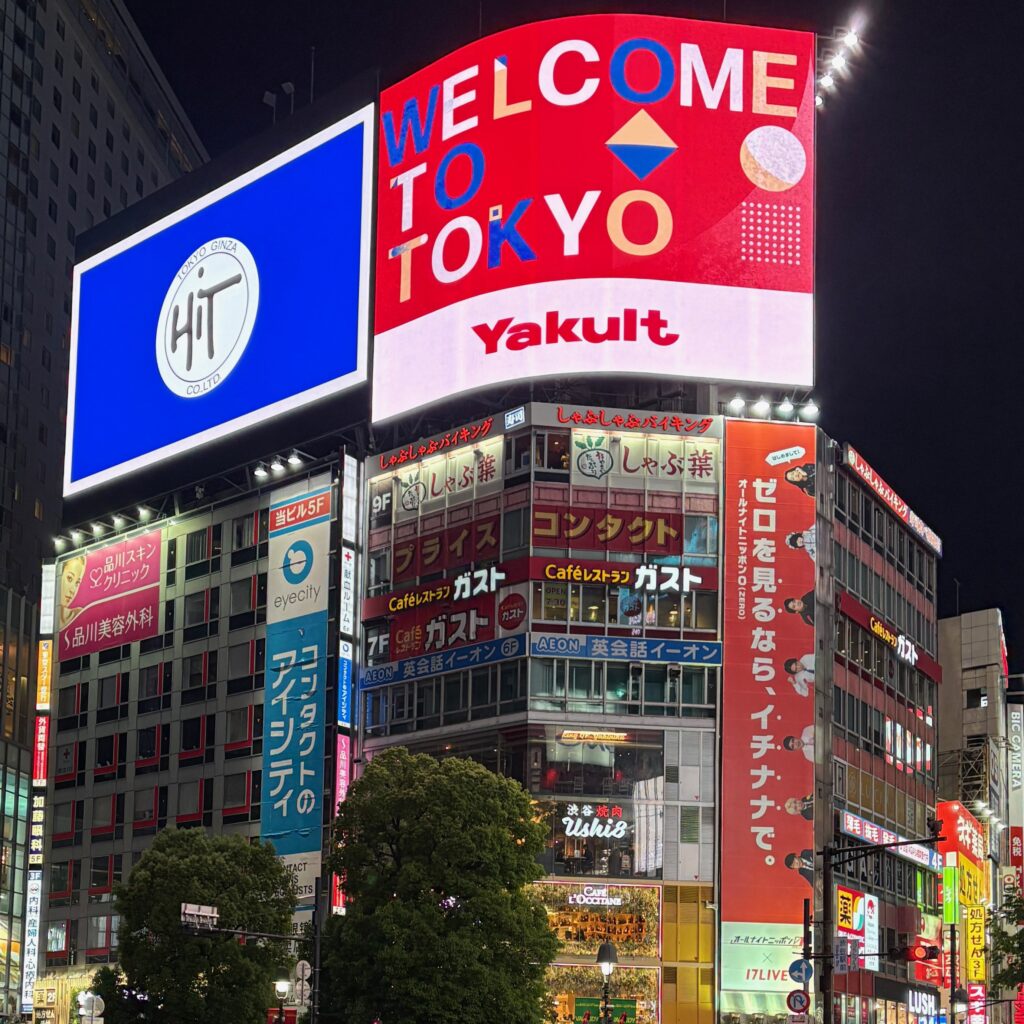
Quick Tips for Visiting Tokyo
Narita Express Airport Train: This is the fastest and best way to get into the city from Narita International Airport. First, make your way downstairs to the station at the airport. On the right-hand side are two machines with a gentleman assisting tourists.
Purchase your JR Train tickets at the machine, and you cannot use Suica or Pasmo to pay for this train.
Suica & Pasmo: Add one of these digital IC cards to your smartphone, preload it with money, and simply tap it as you use the city’s public transportation.
Google Translate App: Essential to have in any destination, turning on the mic helps too.
ESim with Airalo: Download the Airalo app and purchase an ESIM for your phone data so you’ll have data as soon as you land!
Carry Cash: Most places take card, but some restaurants and markets only accept cash.
Hold a Plastic Bag: Have a plastic bag in your bag, garbage bins in the city aren’t always found.
Don’t Walk & Eat: It’s considered rude to walk and eat your food in Japan, respect the culture.
Indoor Voice: In Japan, be mindful of your tone in public spaces such as transportation and restaurants. Speaking loudly is often considered disruptive and rude.
Restaurant Tip: Some restaurants only have Japanese menus; you’ll have to use a Google Translate camera or choose to go elsewhere.
Google Food Ratings: In Tokyo, you’ll spot many restaurants in the 3 Star sometimes ranking; in Seoul and Tokyo, locals are tough food critics, so don’t write off restaurants with 3-star ratings!
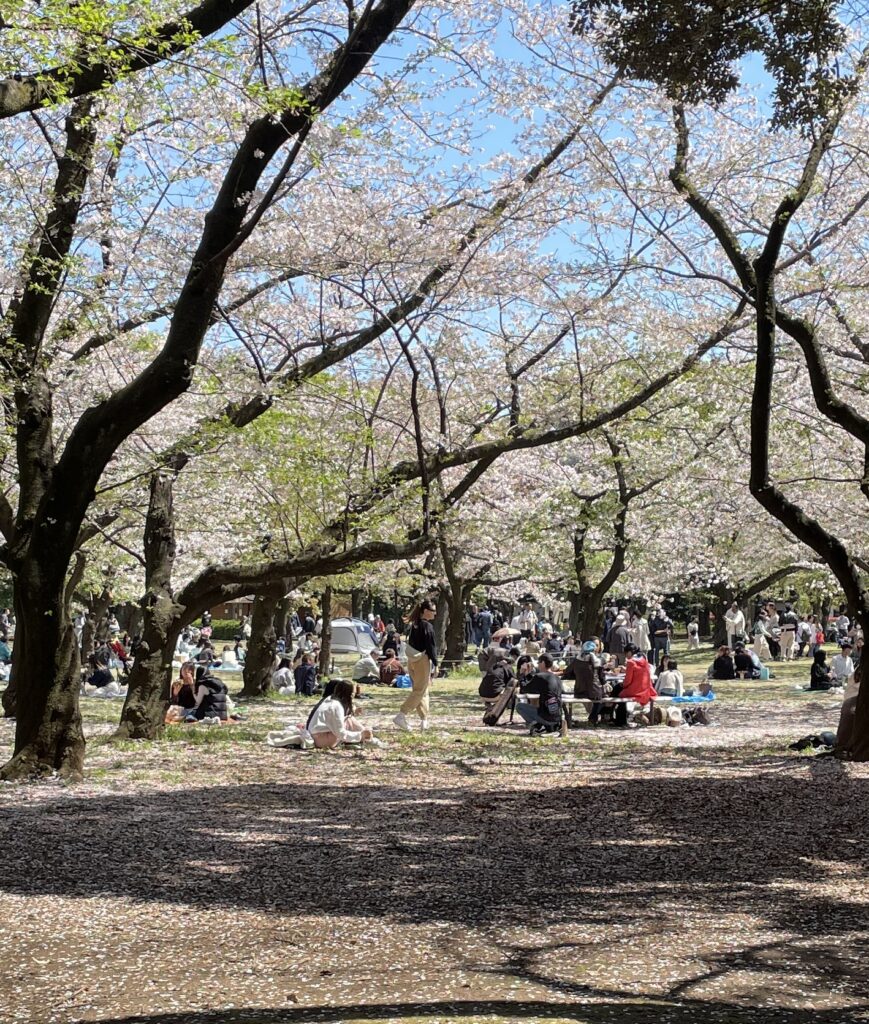
Day 1 in Tokyo
Morning: Shinjuku Gyoen National Garden
A fantastic way to start your first morning is by visiting Shinjuku Gyoen National Garden, which spans over 144 acres.
As you walk around, you’ll feel like you’ve left Tokyo behind, surrounded by beautifully landscaped gardens that blend Japanese and French influences.
The park features charming ponds, perfect for taking a break, and I was lucky enough to visit in early April when the vibrant cherry blossoms were in full bloom, definitely a bucket list moment!
Afternoon & Evening: Akihabara
In the afternoon, you’ll be spending the rest of your day in Akihabara, which is undoubtedly the most unique area in Tokyo; stepping in feels like entering a video game.
This district is where technology, anime, manga, and Japanese pop culture all collide.
On the main road, you’ll find numerous electronics shops selling everything from iPods to vintage gaming consoles and collectibles, which was a nostalgic treat for me to see many of the electronics I grew up with again!
Walking through the streets, you’ll notice plenty of karaoke shops, lively arcades, and maid cafés, with girls in maid costumes inviting visitors to stop by, definitely something different you don’t see in most places in the world!
In the evening, the streets come alive with neon lights and a buzzing crowd. What I loved most about Akihabara was its gamified atmosphere; it’s an experience you won’t find anywhere else in the world, really!
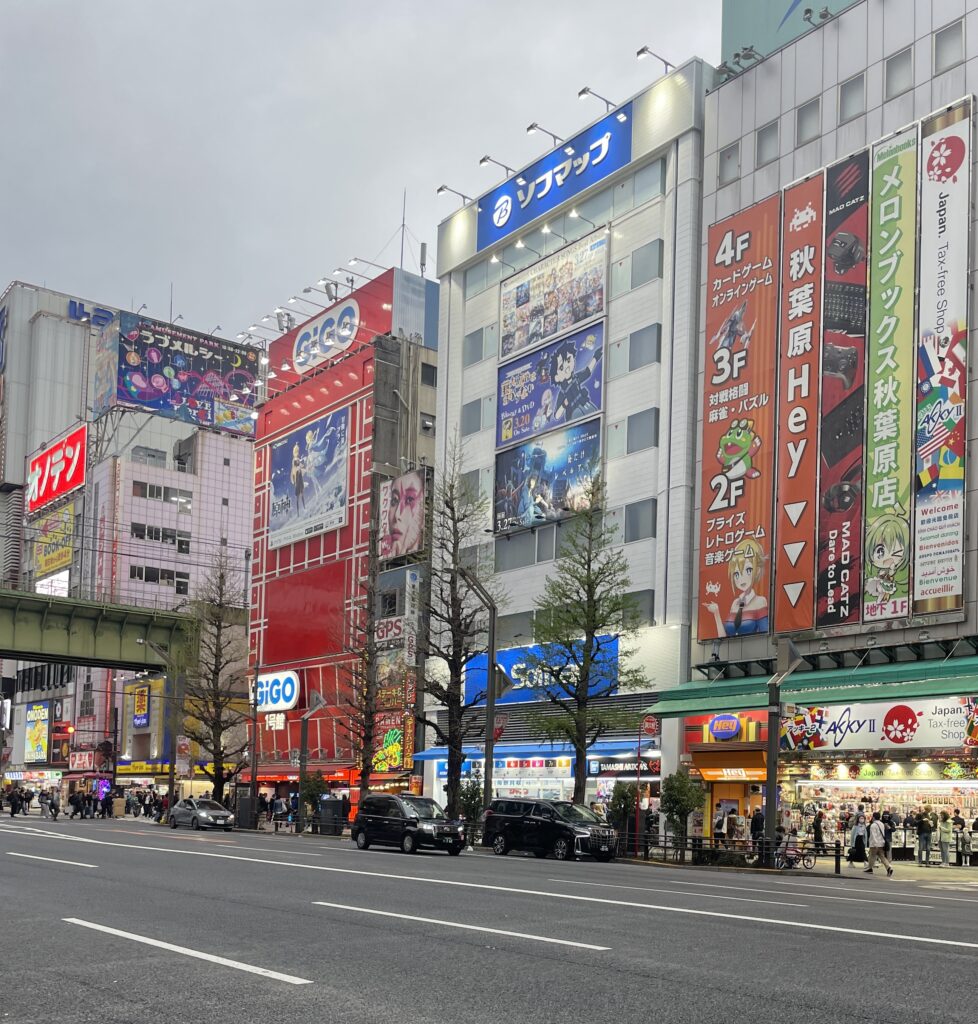
Day 2 in Tokyo
Morning: Tsukiji Outer Market
Ready for day two of your adventures in Tokyo? You’ll start by visiting the Tsukiji Outer Market, a lively and sprawling market with delicious foods.
Here, you’ll find the freshest fish, cuts of wagyu, Japanese omelette, and so much more.
In addition to all the tasty foods, there are vendors selling various spices and both fresh and dried seafood.
The Tsukiji Outer Market was once one of the largest wholesale seafood markets in the world but has since relocated to a more spacious area in the city. Today, it has transformed into what the locals call a “food town.”
Walking around the market, you can appreciate its historical significance, as it has existed since 1935. Everything I tried there was delicious, and don’t forget to have some mochi for dessert!
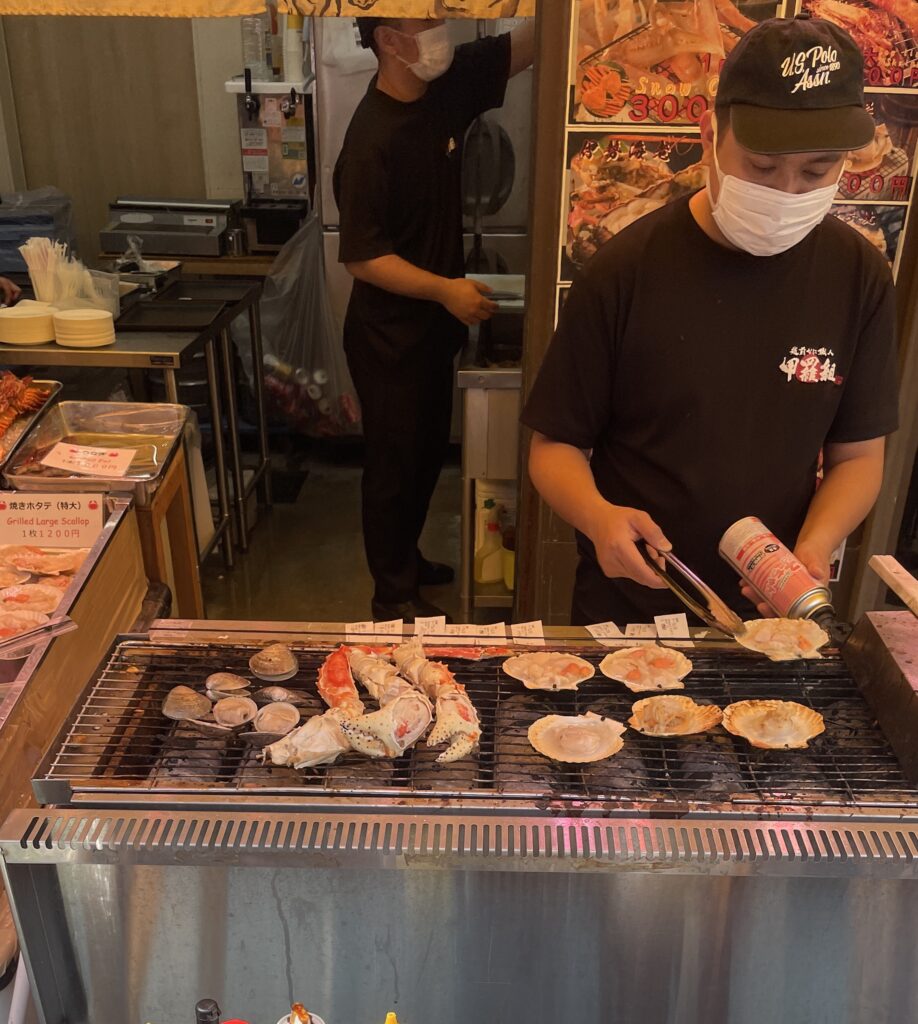
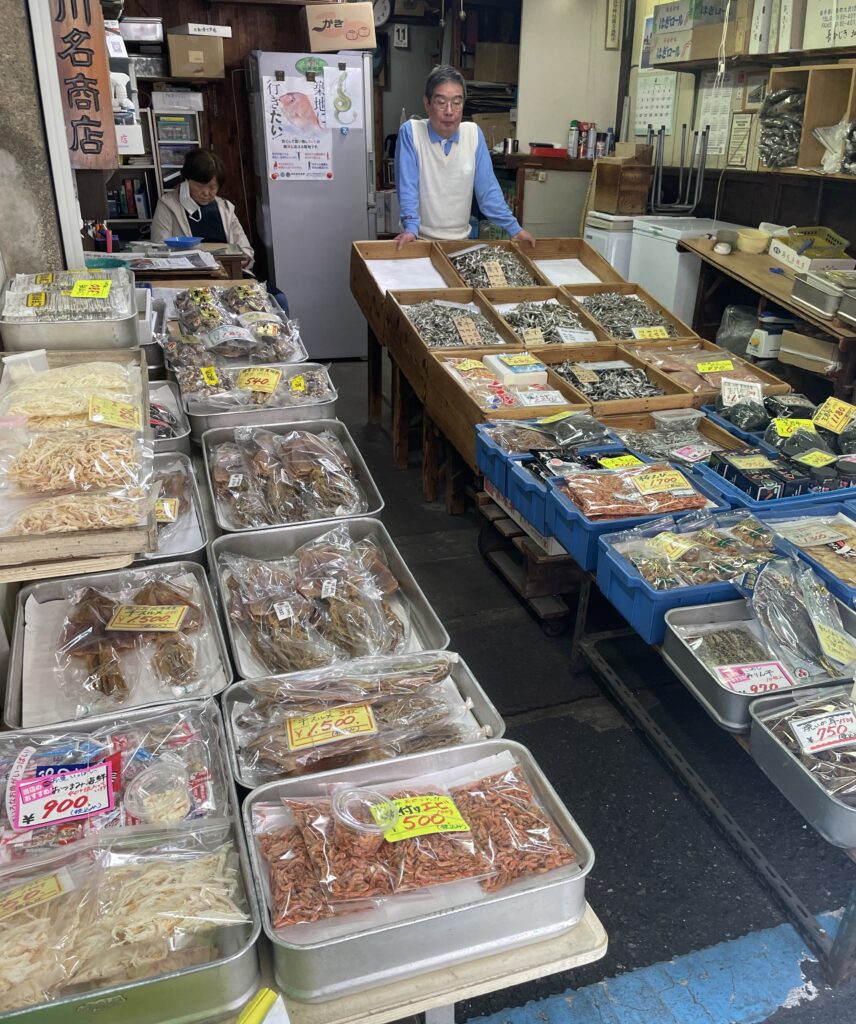
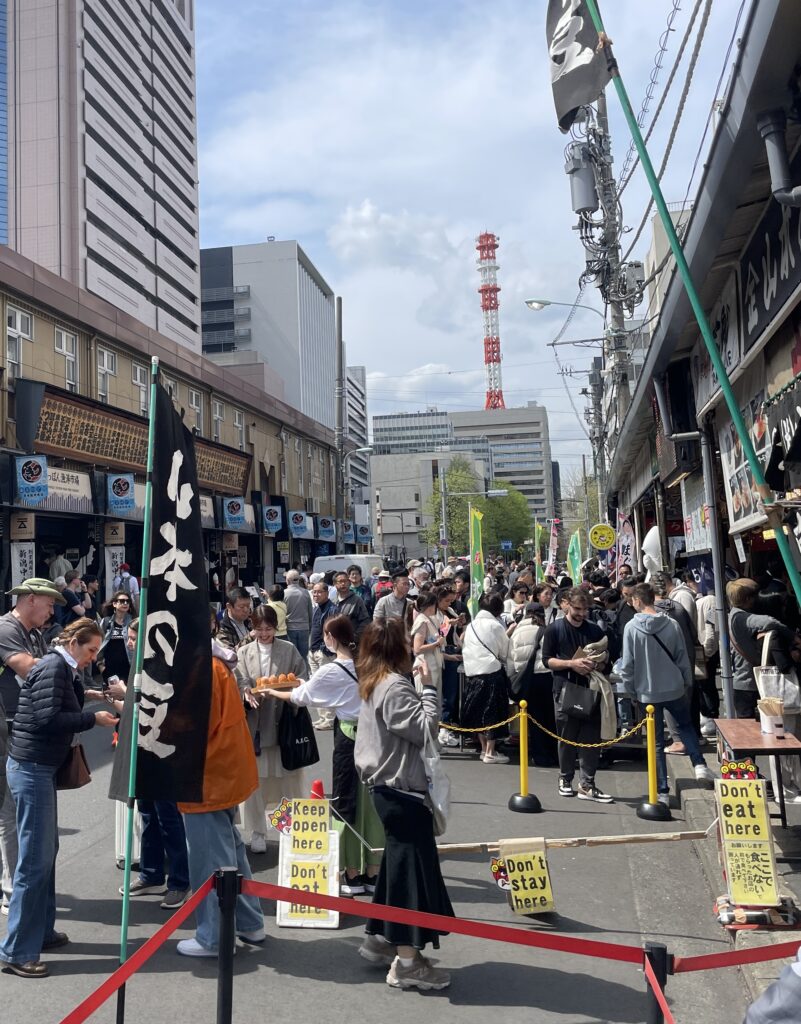
Afternoon: Ginza
Just a short walk from the market is Ginza, one of Tokyo’s most affluent areas. As you stroll through Ginza, you’ll quickly notice the wealth that surrounds you.
The main road is lined with luxurious shopping brands, and the central mall, Ginza Six, adds to the upscale atmosphere.
In addition to high-end shopping options, you’ll find plenty of mid-tier brand stores, including the impressive Uniqlo flagship store, which spans six floors, it’s hard to believe!
I highly recommend visiting Ginza Itoya, a remarkable arts and crafts store in the area.
The main road in Ginza is one of the most aesthetically pleasing streets I’ve ever seen. The architecture, the layout, and the overall organization of the area captivated me. I fell in love with this beautiful street.
On weekends, from 12 PM to 6 PM, a few of the roads in Ginza are used as walking streets, known as the Ginza Pedestrian Paradise.
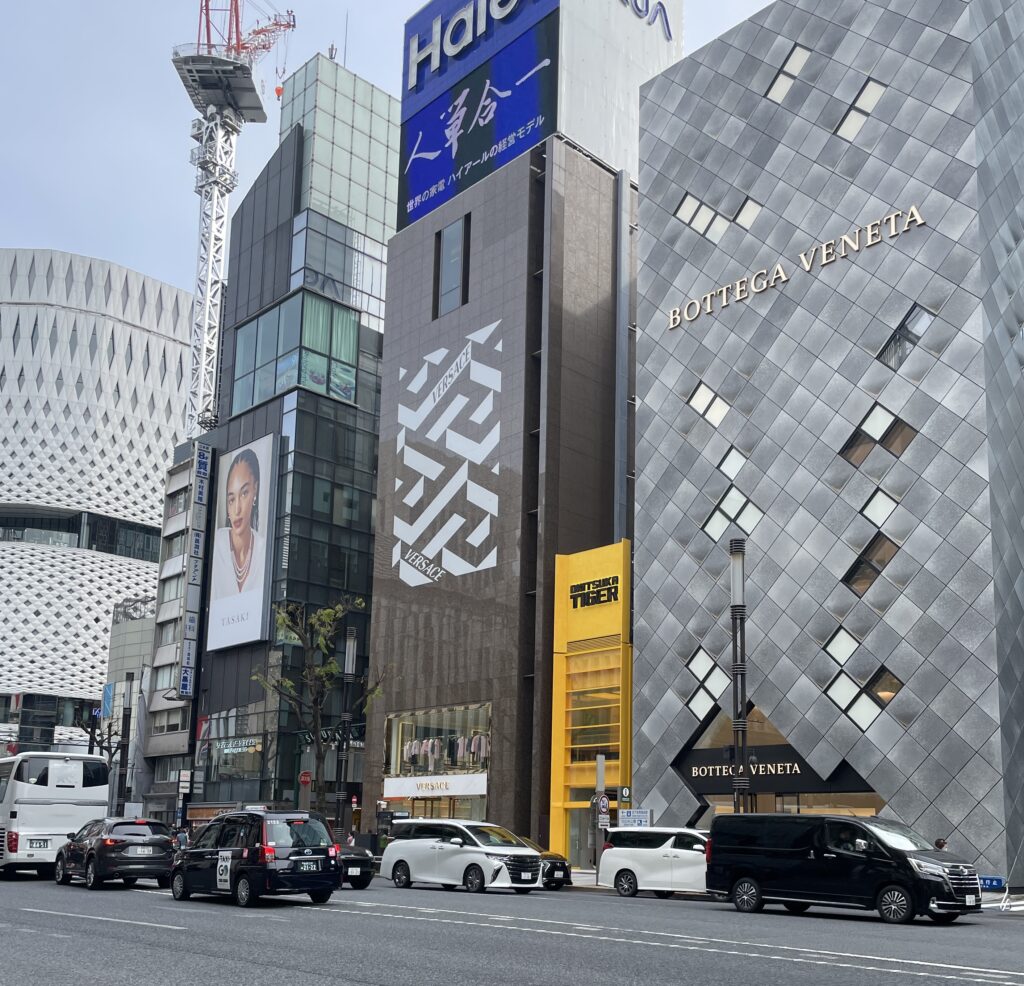
Evening: Shibuya Crossing & MEGA Store
It’s time to visit the world-famous Shibuya Crossing, the iconic crosswalk you’ve seen online or on TV.
When you think of Tokyo, this bustling intersection is likely the first image that comes to mind.
Getting there is easy; simply head to Shibuya Station. Once you step outside, you’ll be greeted by the sight of locals and tourists crossing in all directions, surrounded by brightly lit signs and buildings.
Take a few pictures or maybe a video to capture the moment, then enjoy dinner in Shibuya. After your meal, explore the area, where you’ll find numerous shops, including the famous MEGA store, a massive 24-hour discount store where you can purchase almost anything.
Day 3 in Tokyo
Morning: Harajuku
Let the adventures continue on your third day in another exciting area of Tokyo: Harajuku!
As you arrive, start your morning at Eggs ‘n Things for some breakfast, or go to FamilyMart and buy some sushi, like I did every morning.
Just a short walk away is Takeshita Street, a lively walking street filled with unique shops, boutiques, and delicious street food to try!
After exploring Takeshita Street, cross over to Harajuku Street, the main street in the area.
Take a stroll and discover the charming side streets that Harajuku is known for; these quaint alleys were my favorite part of the neighborhood.
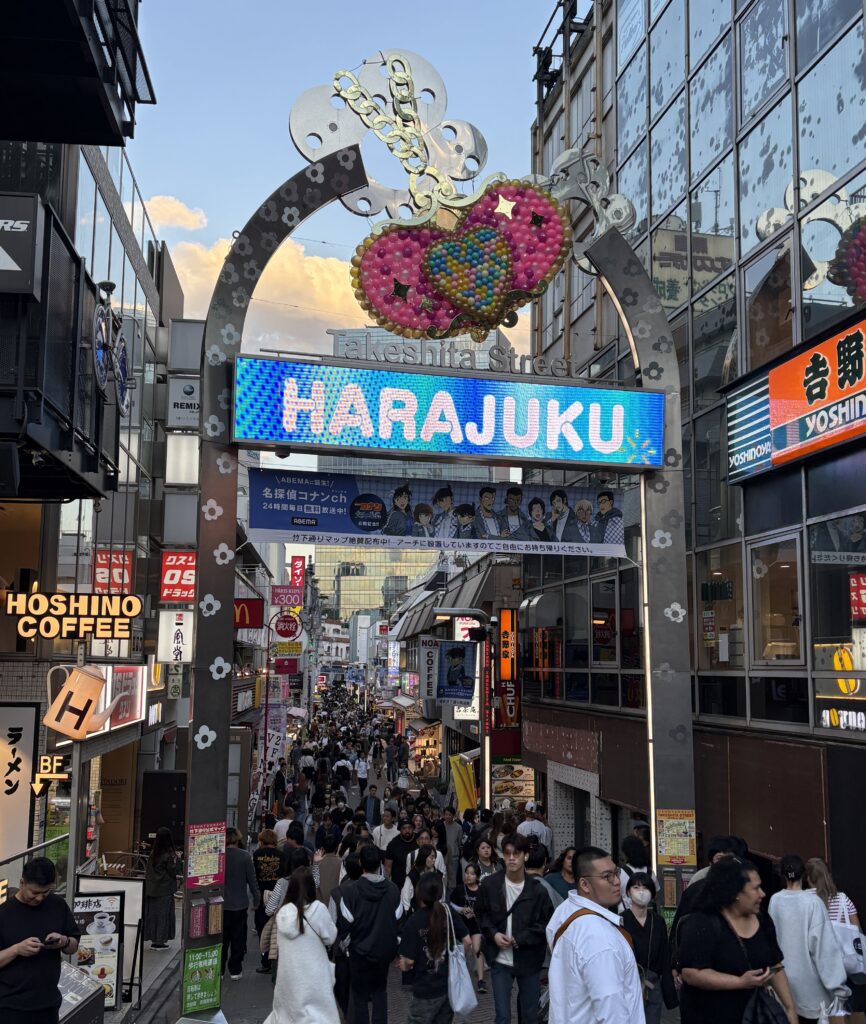
Afternoon: Meiji Shrine & Yoyogi Park
It’s time to visit Yoyogi Park, a beautiful central park in Harajuku that also connects to the Shibuya area.
As you walk around, you’ll discover expansive lawns, serene ponds, and colorful flowers, especially if you’re visiting in spring.
There are plenty of spots to sit and relax, making it a perfect place to unwind!
After enjoying some downtime in the park, ideally with a few snacks from the convenience store, head over to the traditional Meiji Jingu Shrine located next door, which dates back to 1920.
At the shrine, you’ll be greeted by quintessential Japanese architecture and tranquil zen gardens.
Once you’ve finished exploring, you’re bound to be hungry. I recommend visiting Roast Beef Ohno, a popular restaurant in Harajuku known for its towering roast beef bowls topped with raw egg yolk and cream cheese, it’s seriously delicious!
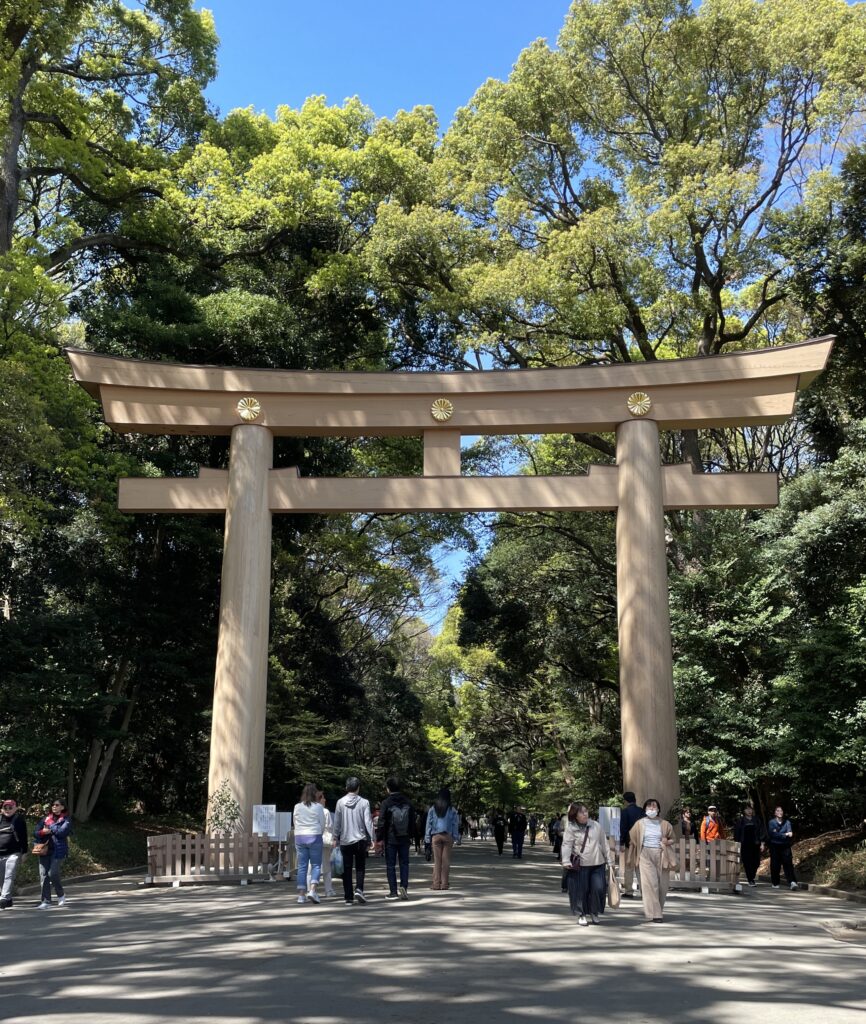
Evening: Shinjuku
After enjoying the famous beef bowl, it’s time to walk it off and head to Shinjuku, the second most popular area in Tokyo.
It’s about a 30-minute walk from Harajuku, but you can also take the train if you prefer!
Shinjuku is a bustling district known for its vibrant nightlife, top izakaya restaurants, green spaces, and bright lights along the main street. It truly has it all, including the world’s busiest train station.
As you explore, you’ll find plenty of shops, entertainment options, and unique streets to discover. Be sure to visit Shinjuku Golden-Gai, a charming area filled with narrow, winding streets lined with small bars and izakaya restaurants.
For dinner, consider Tsukada Nojo or Kabuki Sushi, I’ve included both in a list below in the article!
You might recognize Shinjuku from social media photos showcasing its dazzling lights; it’s famous for its impressive illuminated buildings at night, even more so than Shibuya.
Take your time to snap some photos of Shinjuku after dark; it’s very picturesque! After visiting all the main areas in Tokyo, Shinjuku quickly became my favorite area.
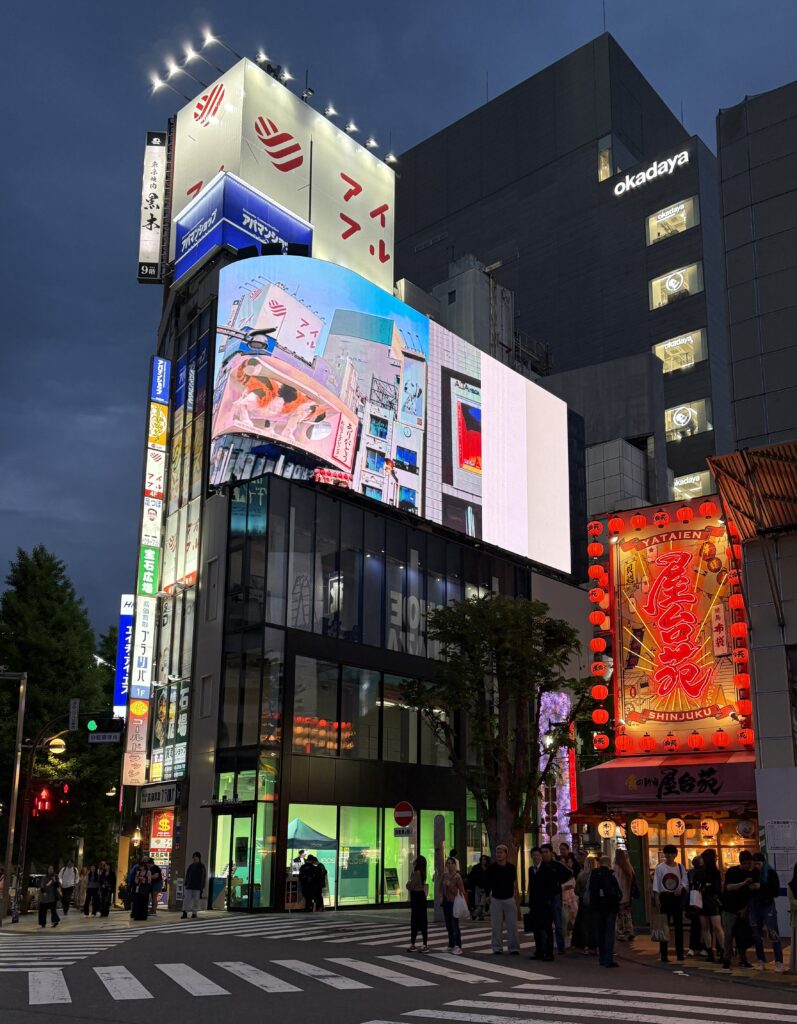
Day 4 in Tokyo
Morning: Senso-ji Temple
Start your next morning in Tokyo by exploring Sensō-ji, the oldest temple in the city, which dates back to 645 AD.
Every year, millions of visitors flock to Sensō-ji, and it’s easy to see why. The temple’s stunning Japanese architecture, vibrant colors, and intricate statues create an atmosphere that feels like stepping back in time.
Despite being in the heart of Tokyo, the serene surroundings transport you away from the city’s hustle and bustle.
Afternoon: Nakamise Street
Also, at the Senso-Ji temple, you’ll find the bustling Nakamise shopping street, the perfect place to discover traditional Japanese snacks, souvenirs, and crafts to purchase.
Do you know those traditional Japanese handheld fans? Those are found here and much more. In addition, you can find unique snacks such as ningyo-yaki, soft baked sponge cakes, and taiyaki, fish-shaped cakes filled with sweet bean paste, among many other treats!
Evening: Tokyo Sky Tree & Ueno Ameyoko Shopping Street
As early evening comes around, head over to the famous Tokyo Sky Tree, the best observation deck in the city.
Here, you’ll experience breathtaking panoramic views from 450 meters above the ground.
Walking around a vast city like Tokyo, you can appreciate its organized structure.
However, seeing it from above offers a remarkably clear perspective of how well-planned and thought-out Tokyo truly is. Skip the line by purchasing SkyTree tickets in advance!
To finish your evening, go to the Ueno Ameyoko Shopping Street. This unique area is a maze of streets with vintage shopping, delicious Izakaya restaurants, and souvenir stores.
If you’re looking for that perfect pair of Japanese denim or unique vintage finds, this is your spot!
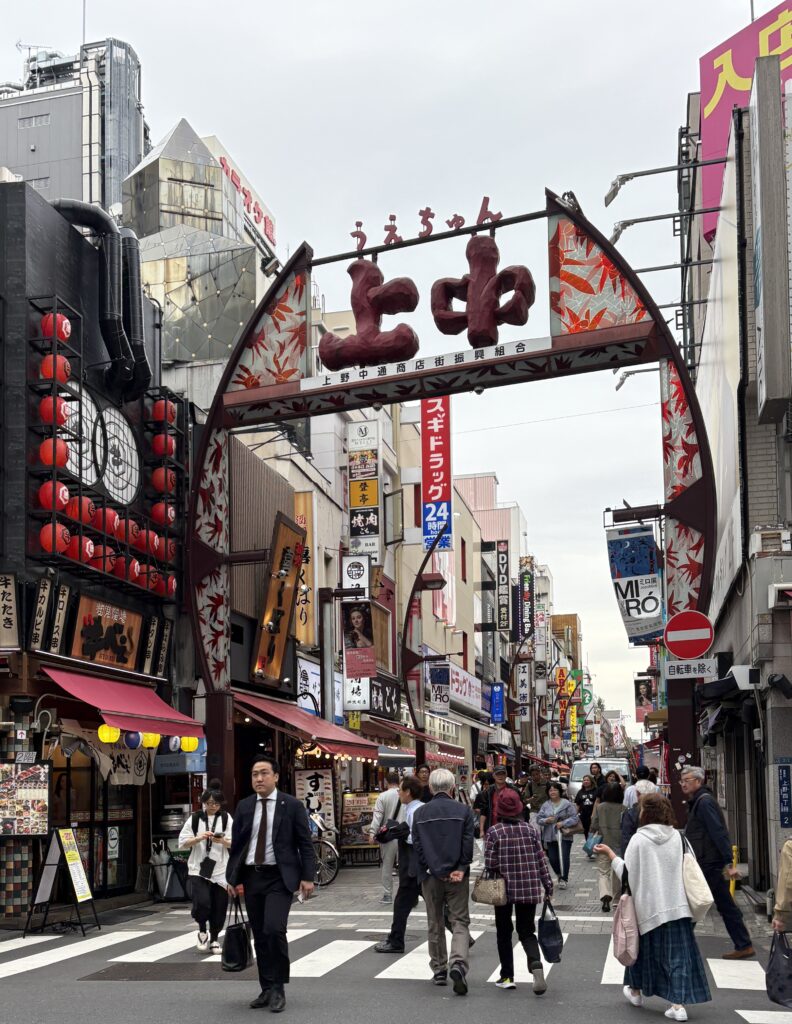
Day 5 in Tokyo
Morning & Afternoon: Imperial Palace & Modern Art Museum
It’s your last day in Tokyo, did it fly by? I’ve never been somewhere where time seems to vanish so quickly!
There’s so much to see and do, and as a first-time visitor, I was completely immersed in the experience.
For your final day, take it a bit easier, especially after all the walking you’ve most likely done around the city.
Make your way to the Imperial Palace, which is conveniently next to Tokyo Station. After taking the train to Tokyo Station, I walked right into the surrounding park, and I was thrilled to finally see the palace, which had been on my must-visit list for years.
The peaceful atmosphere around the palace, surrounded by water and lush greenery, was lovely.
Just a short stroll away is the National Museum of Modern Art, where I enjoyed exploring the incredible Japanese art on display in such a beautiful setting.
Evening: Relax in your Hotel Area
Spend your last evening relaxing, you’re traveling tomorrow, after all, and you’ll want to be well-rested.
Go back to the area you’re staying in and spend your last evening near your hotel, eat something or a few things I recommended below that you still haven’t tried, and do a convenience store run for some snacks for tomorrow’s travel day!
By the way, the Japanese cream puff desserts at Lawson stores are to die for. You must try it! I’m not a big dessert person, but I couldn’t stop eating it. You’ll find it at most Lawson stores in the fridge section, my goodness.
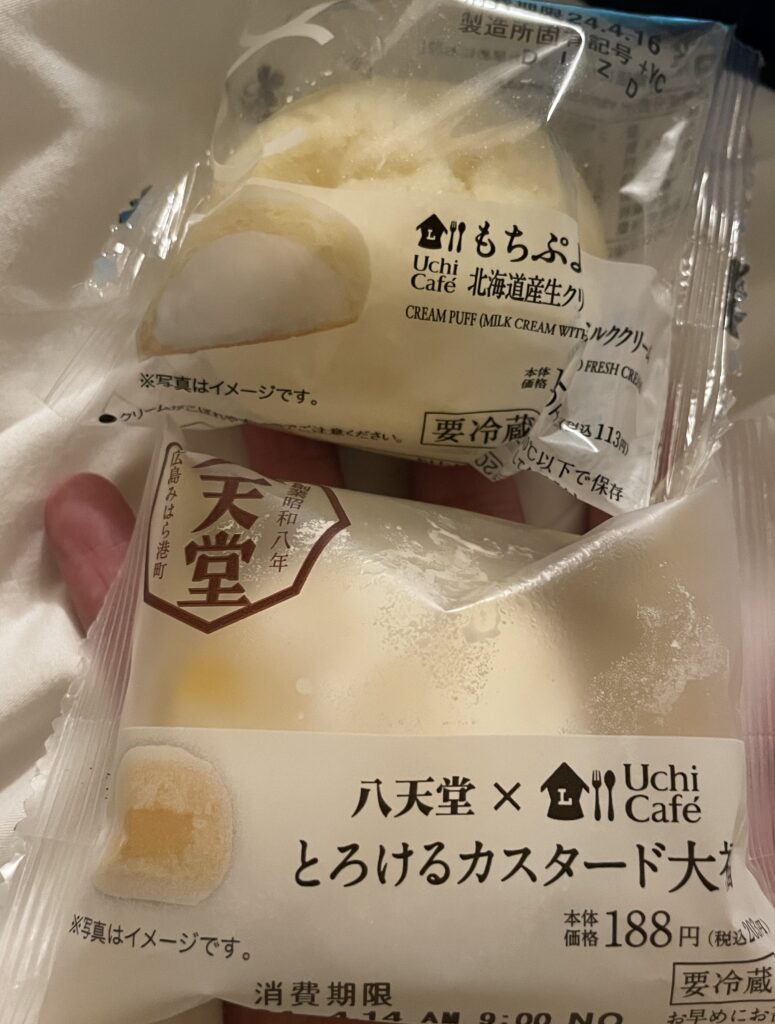
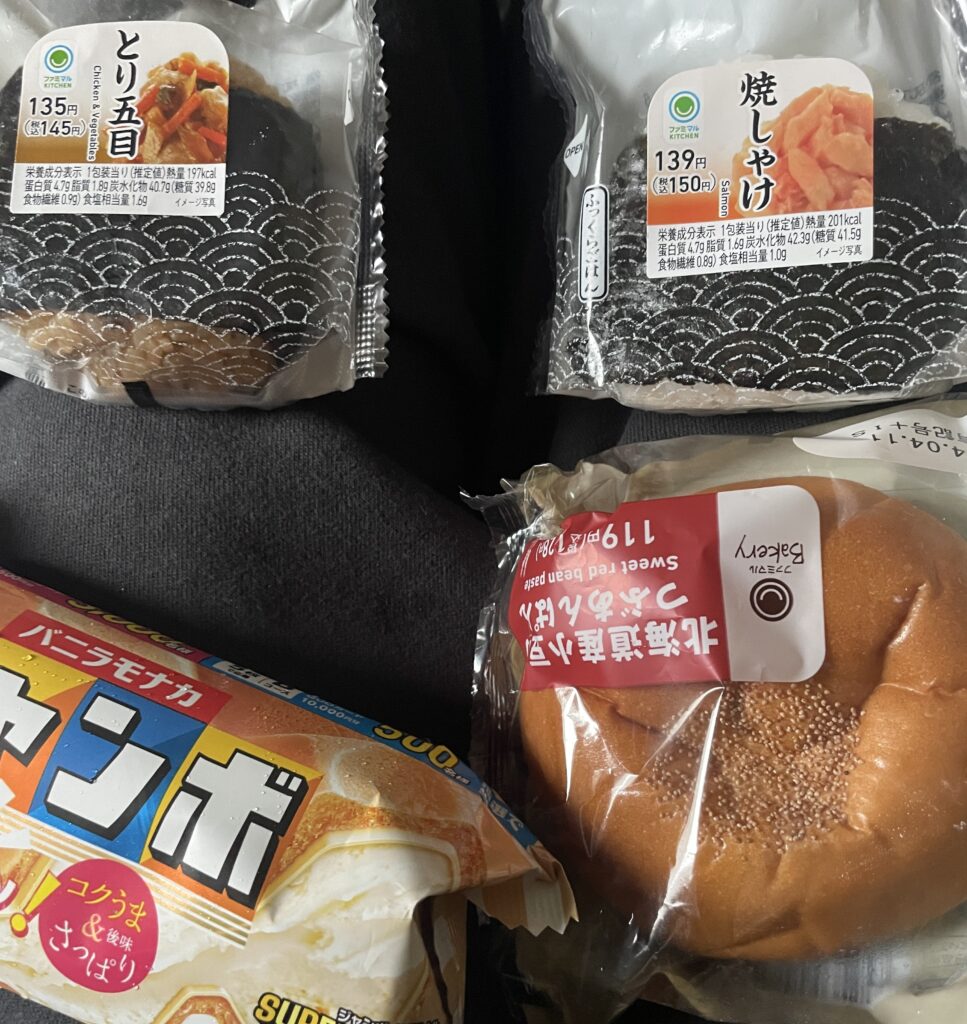
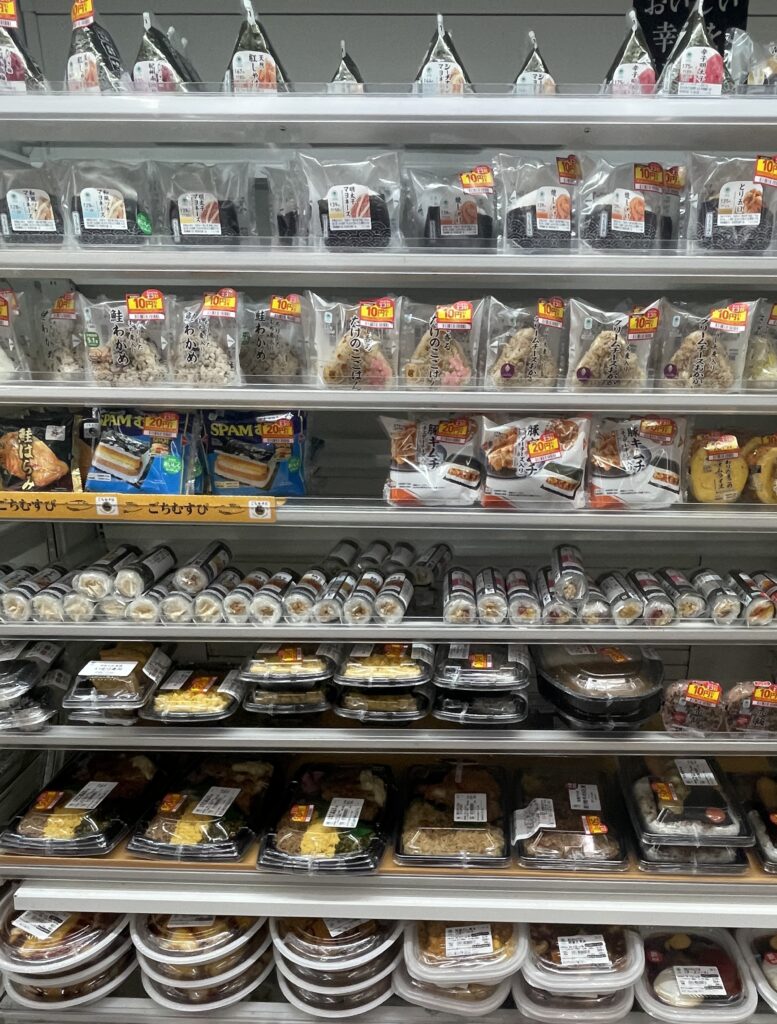
Where to Stay in Tokyo
The neighborhoods mentioned below are centrally situated, providing easy access to the city’s numerous transportation options.
Regardless of where you stay in Tokyo, getting around is both convenient and fast.
Shibuya, Shinjuku, and Harajuku are the most central. That said, the train system in Japan is efficient and easy to use, so regardless of which area you stay in, you can get around quickly.
My favorite area is Shinjuku. The train station is well-connected, there’s plenty to do, it’s a sight to see at night, and the restaurant options are excellent and endless.
And despite its location, the area has some laid-back spots, unlike Shibuya, which is always very busy due to its famous Shibuya Crossing attraction.
| Areas in Tokyo | Which Area is Best for You? |
| Shibuya | Shibuya is a vibrant district in Tokyo known for its iconic Shibuya Crossing, trendy shopping and dining options, and lively nightlife, making it a central hub for locals and tourists. |
| Shinjuku | A dynamic district known for its iconic neon-lit streets, the Shinjuku train station, diverse shopping and dining options, towering skyscrapers, and lively nightlife. |
| Harajuku | Harajuku is a lively Tokyo neighborhood celebrated for its eclectic street fashion, bustling Takeshita Street packed with unique shops and cafes, and its nearby serene Meiji Shrine. |
| Ginza | Famous for its upscale shopping boutiques, fancy cafes, historical department stores, and vibrant dining scene. |
| Akihabara | Known as the arcade capital of the world, in Akihabara, you’ll find anime stores, arcades, unique electronic shops, cafes, and everything about Japanese pop culture. |
| Asakusa | A charming historical district in Tokyo, most famous for the iconic Senso-ji Temple, Nakamise shopping street, and much more. |
| Roppongi | Roppongi is a cosmopolitan district known for its stunning art museums, upscale dining, vibrant nightlife, and luxury accommodations. |
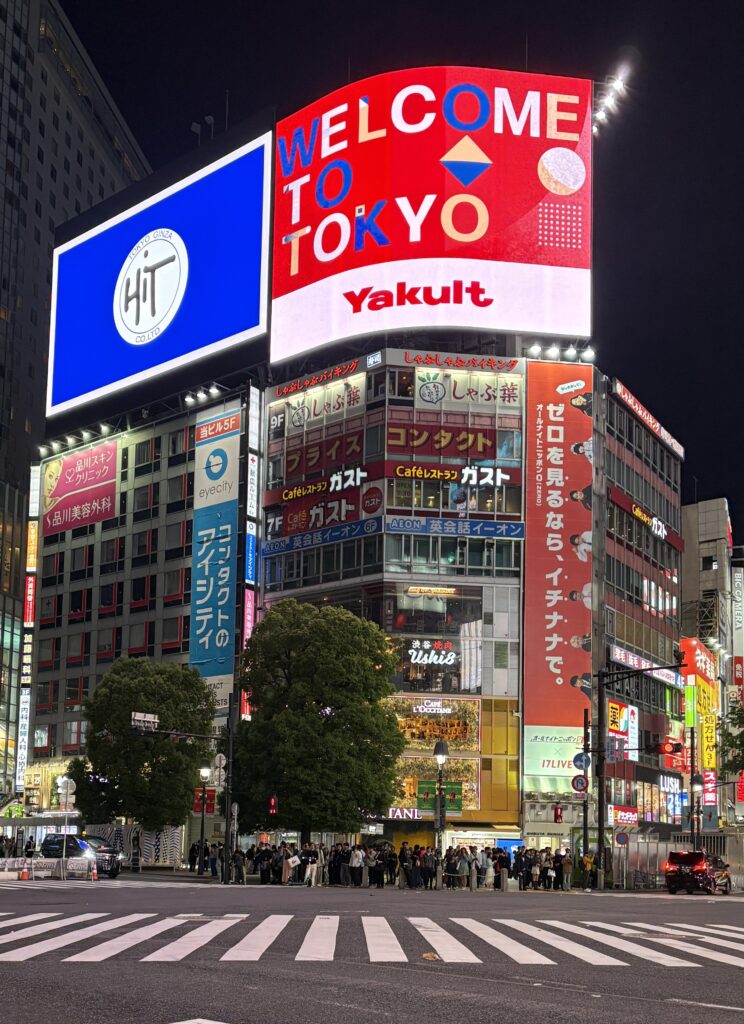
How to Get Around Tokyo
Navigating Tokyo can be daunting, I was slightly stressed about navigating around before arriving, but after visiting, I discovered it was very easy. Also, some of the train stations have tourist info desks!
Travel TIP: Use Google Maps for train timing and where to go, it’s very convenient, and if you miss your train, it’s okay, trains come by every 3 minutes!
Trains and Subways: The easiest way to get around Tokyo is by using the extensive network of trains and subways. The JR East, Tokyo Metro, and Toei Subway lines efficiently connect most of the city and are affordable. As mentioned earlier, use your Pasmo and Suica cards on your smartphone to pay.
Taxi Apps: Apps like GoTaxi operate similarly to Uber, offering the choice of a car for easy transportation around the city.
Taxis: Taxis are readily available throughout Tokyo, although they can be a bit tricky to spot since they are typically black classic cars. Taxis shouldn’t be used for short distances, they can be quite expensive.
Buses: Another excellent way to get around Tokyo is by bus, with options like Toei buses providing extensive coverage, although they are less ideal for tourists due to potential traffic delays.
Bicycles: Some say that once you’ve experienced cycling in Tokyo, you have yet to explore the city fully! Services like Docomo Bike Shares offer convenient bike rentals.
Airport Rail Link: Trains like the Narita Express and Keisei Skyliner allow travelers to get from Narita Airport into the city center efficiently. These lines operate frequently throughout the day.
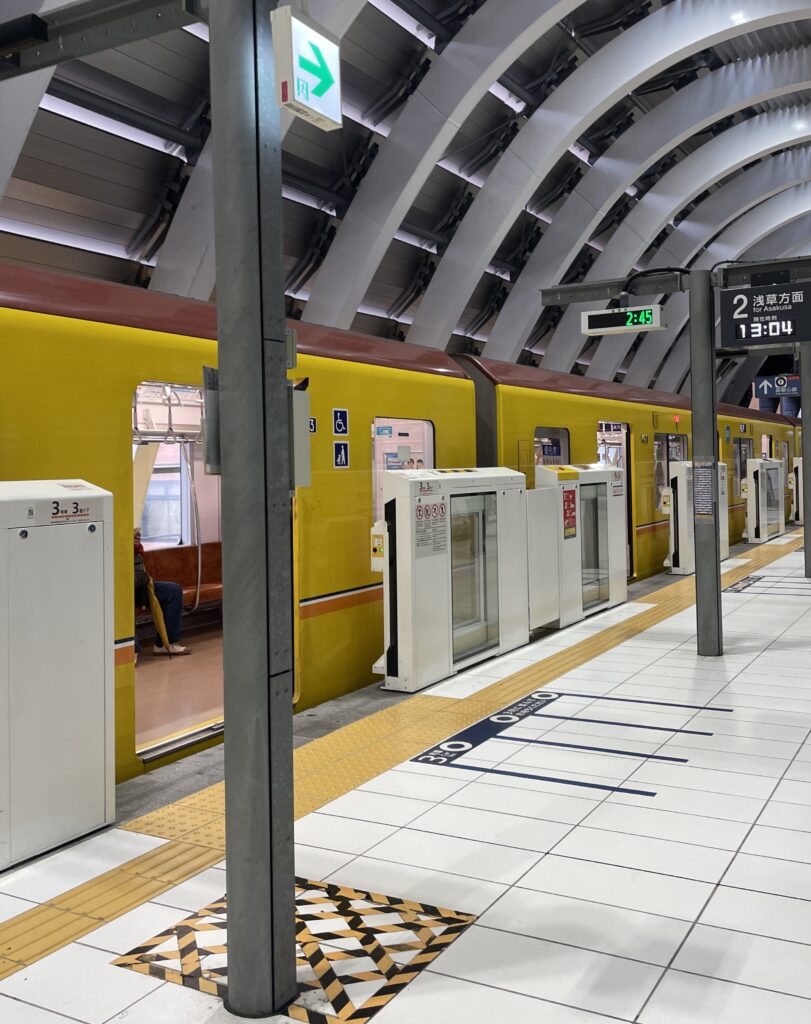
Where to Eat in Tokyo
As a passionate foodie, I was overwhelmed by the endless dining options in Tokyo. Japanese cuisine is among my top three favorites, and the meticulous attention to detail in food preparation is awe-inspiring in Tokyo.
Whether you’re craving sushi, ramen, or kaiseki, Tokyo’s culinary scene promises exceptional quality and unforgettable experiences.
The city also offers several other cuisines as well, but you’re in Tokyo, common now, stick the Japanese food!
Just a heads up: depending on their popularity, some restaurants in Tokyo often have lines.
You can expect to wait anywhere from 15 minutes to even 2 hours, depending on how sought-after the restaurant is. Personally, I experienced a mix of walking right in and waiting at a few places.
- Gyukatsu Motomura: Known for their delicious beef cutlets, you get to cook them right in front of you on a heated stone top, there’s a few location in the city!
- Roast Beef Ohno Branch: Famous for their perfectly executed roast beef bowl with a melting egg yolk and cream cheese, this spots iconic.
- Teppanyaki Ten: A stylish teppanyaki restaurant known for its wagyu beef, lobster and chic atmosphere.
- KABUKI Sushi: An excellent omakase style sushi restaurant serving some top-notch sushi in the Shinjuku area.
- Tsukada Nojo: Exceptionally dim-lit izakaya restaurant serving a wide variety of charcoal grilled meats, appetizers, and tasty cocktails.
- Ramen Zundou-ya: A delicious and convenient ramen restaurant is known for its ramen, but I also recommend the fried chicken here!
- Yakitori Imai: Sophisticated yakitori style restaurant, known for their smokey skewers and excellent side dishes.
- Tsukiji Outer Market: This is the iconic Tokyo fish market, but in recent years it’s turned into a daytime market full of delicious street stalls serving unique food!
- Yakitori Alley: A dim-lit alleyway home to several street-side izakaya-style restaurants.
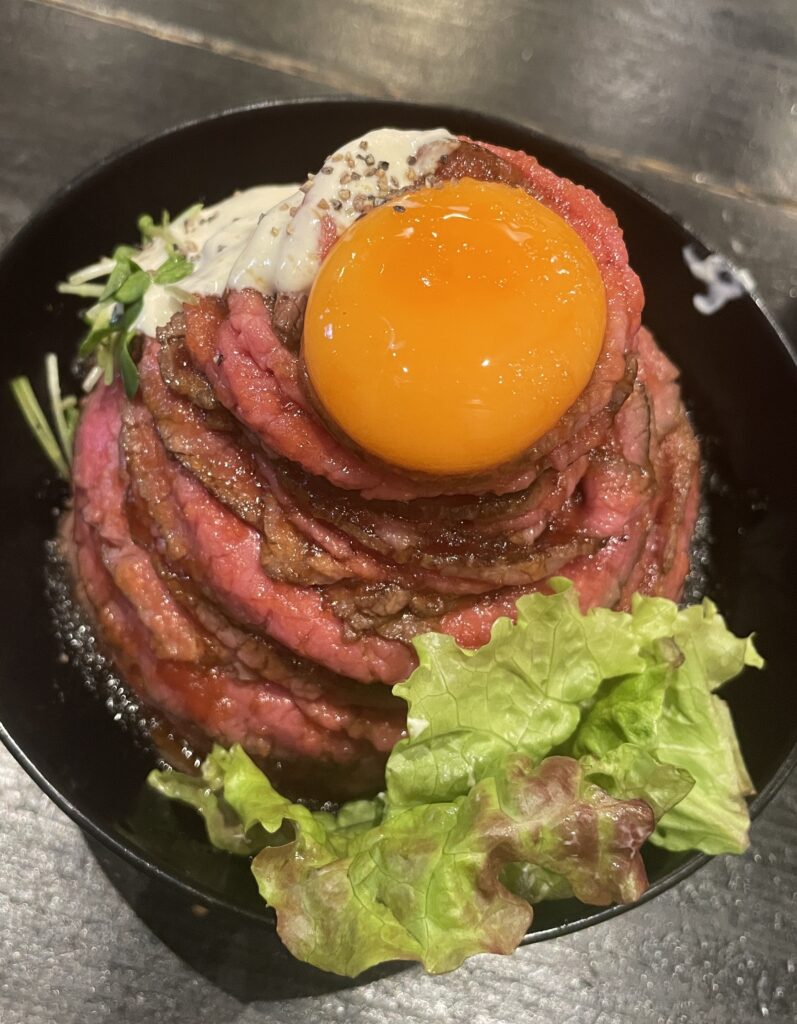
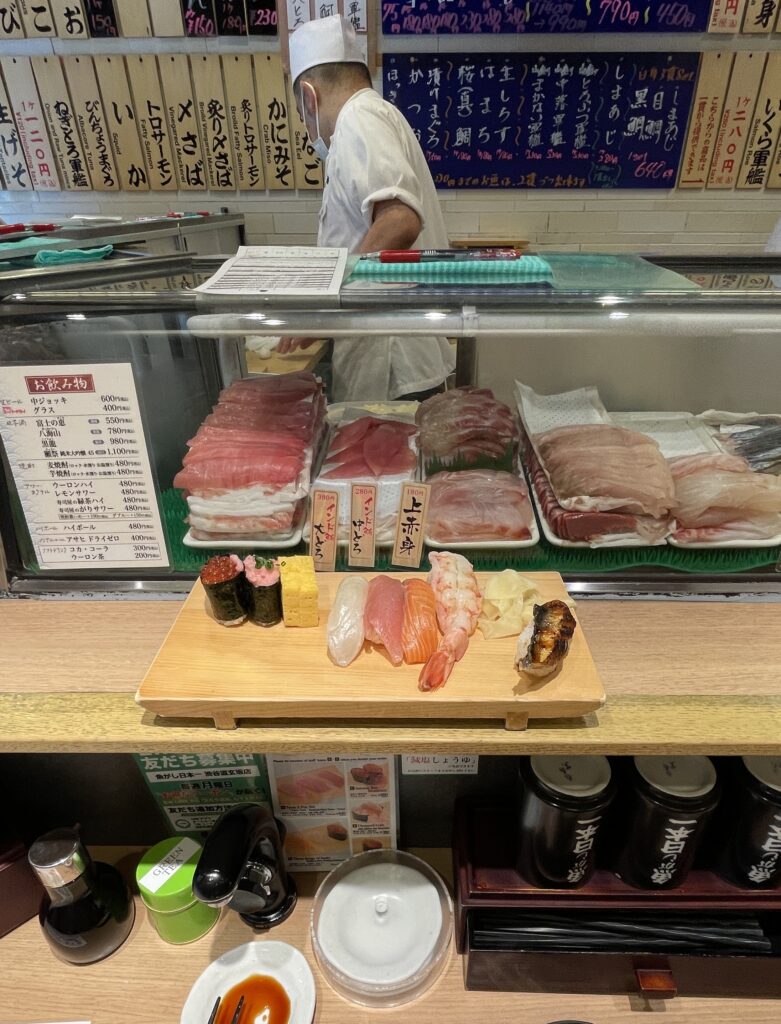
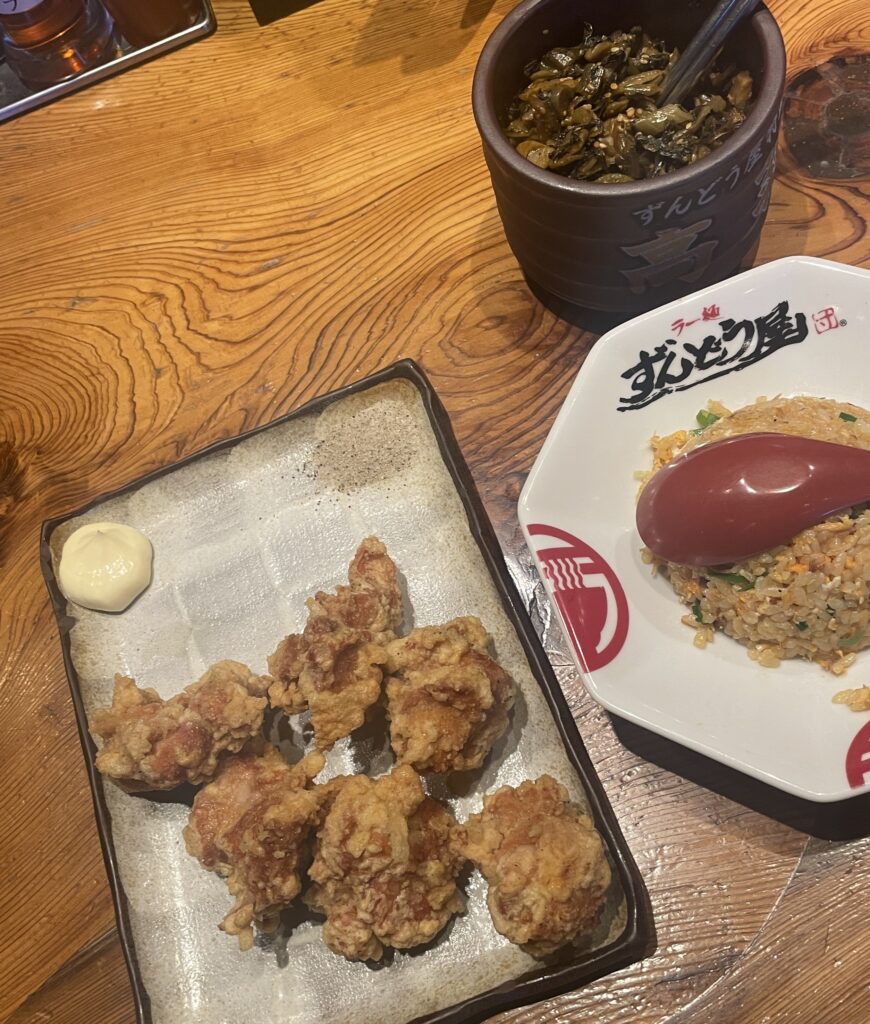
Foods You Must Try in Tokyo
A trip to Tokyo wouldn’t be complete without trying some must-try foods in what is arguably one of the best food cities in the world!
I’ve compiled a list of essential dishes to sample during your stay, while the options are endless, these are the standout selections you shouldn’t miss.
What struck me most about Tokyo’s local cuisine was the remarkable freshness of its beef and seafood compared to other places in the world.
Before exploring must-try foods, be sure to experience the convenience of Japanese stores like 7-Eleven, Lawson, and Family Mart.
They offer an impressive selection of sushi, sandwiches, fried chicken bites, as well as a variety of warm foods and desserts. The Japanese do things differently!
If you’re a serious foodie, Osaka is a destination you can’t skip known as “Japan’s kitchen.” It’s a haven for street food, regional specialties, and bold flavors you won’t find anywhere else!
- Wagyu Beef: Wagyu beef is the melt-in-your-mouth, super tender Japanese beef that’s known for its rich marbling and incredible flavor, making it a must-try for any meat lover visiting Tokyo!
- Sushi & Sashimi: Rice topped with fresh fish, various other ingredients, and sashimi is simply the pure, raw fish served on it’s own to shine!
- Ramen: Steaming pork-broth with thin wheat-based noodles, topped with various toppings.
- Gyukatsu: Gyukatsu is a tasty Japanese dish of breaded and deep-fried beef cutlets, served with barley rice, miso soup, and dipping sauces, letting you grill the meat to your liking right at your table!
- Kaisendon: A bowl of rice topped off with a variety of fresh seafood including sashimi, crab, and shrimp.
- Yakitori: Mouth-watering Japanese grilled chicken, often seasoned with a savoury sauce or salt.
- Japanese Curry: A thick hearty, yet sweet curry served on various foods, meat, veggies, etc.
- Unagi: Unagi is a deliciously rich and buttery grilled eel that’s often served over rice, typically glazed with a sweet soy-based sauce, making it a favorite comfort food in Japan!
- Yakiniku (Japanese BBQ): Marinated bite-sized pieces of meat and vegetables grilled right at your table, delivering a smoky flavor and juicy goodness!
- Okonomiyaki: A delicious savoury pancake packed with cabbage, meat (usually pork belly), seafood and topped off with a drizzle of sauce and bonito flakes (dried tuna).
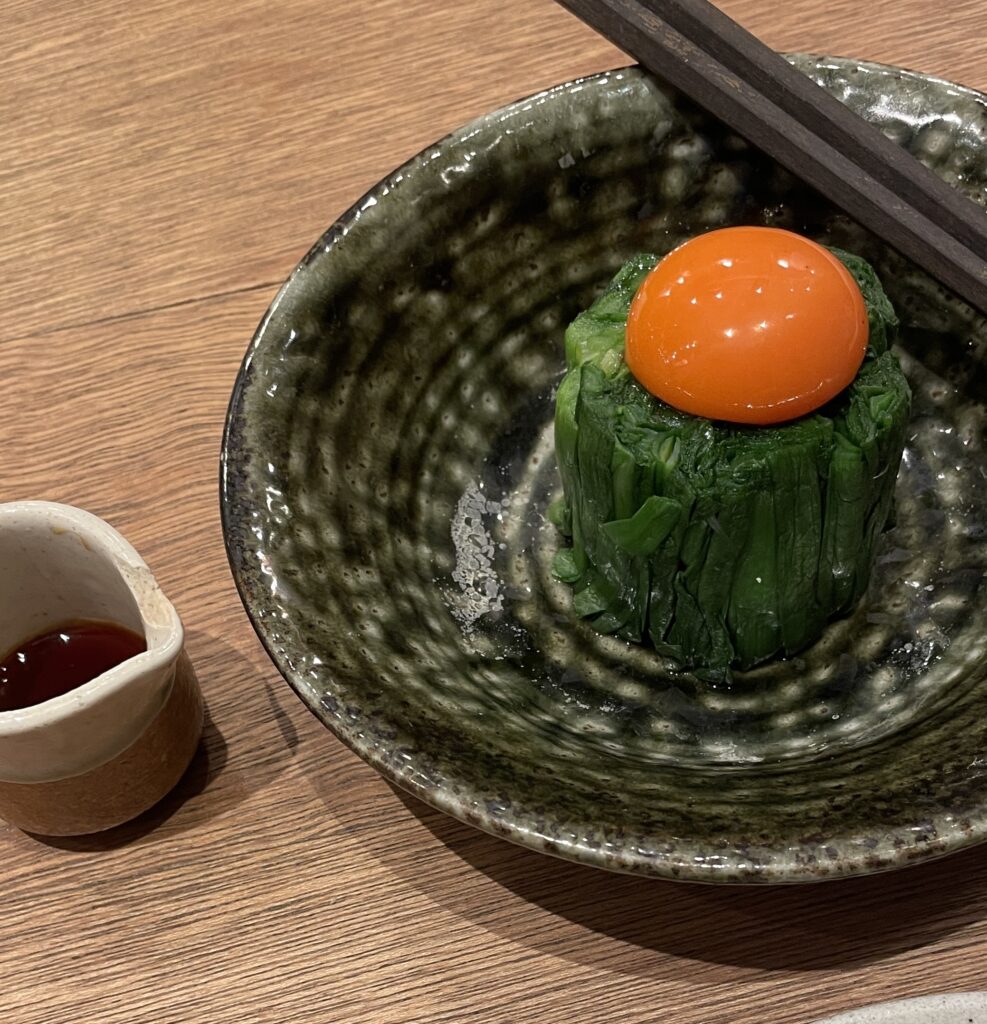
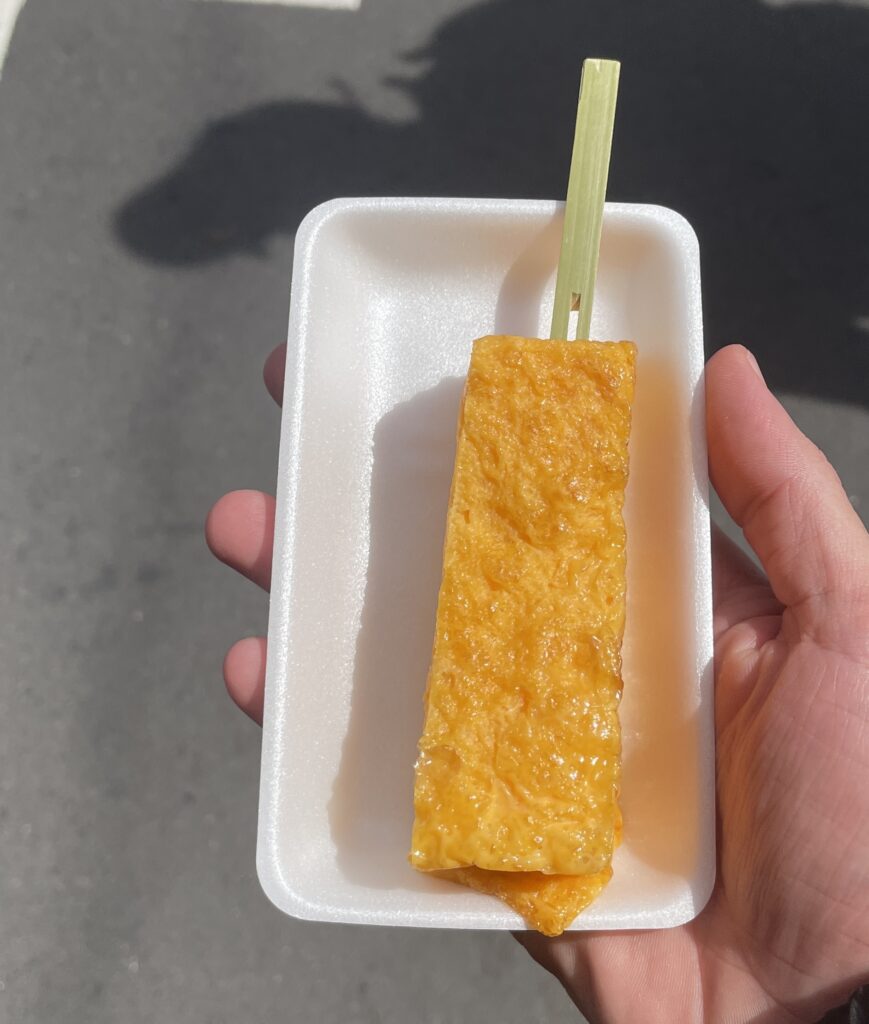
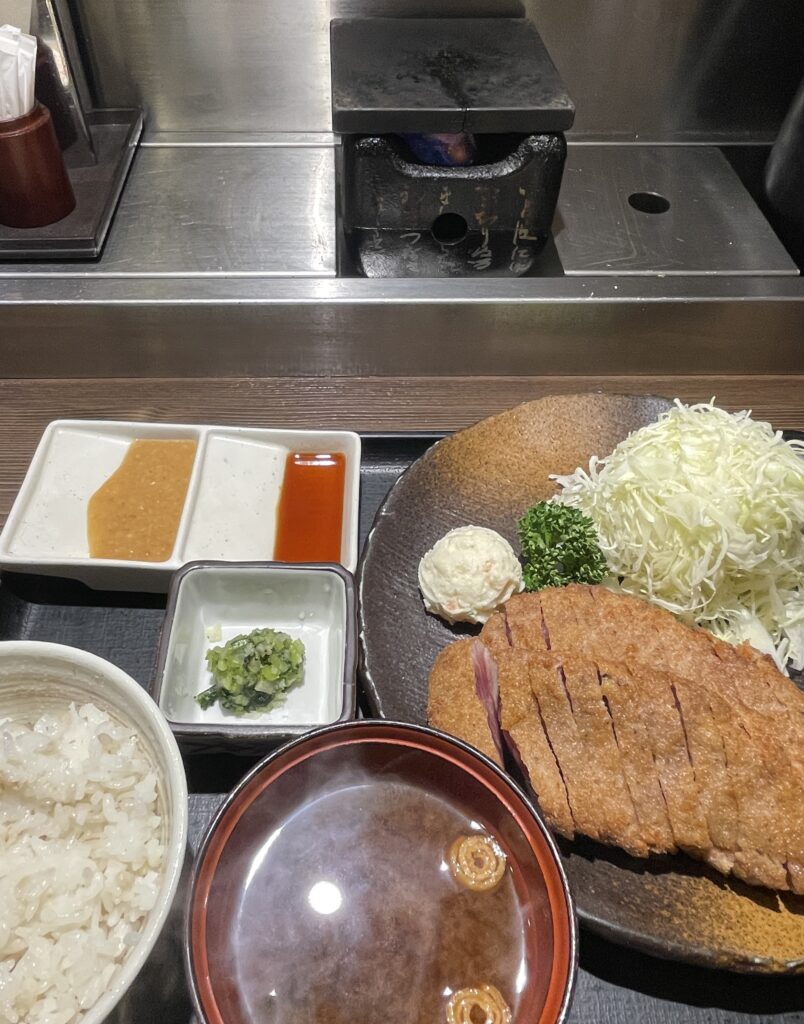
Where to Go Shopping in Tokyo
One of the best things to do in Tokyo is go shopping. No matter what shopper you are, you’ll love exploring Tokyo’s diverse retail scene, as you can find everything here!
From cutting-edge fashion to the latest electronics and traditional crafts, the shopping options in Tokyo are endless.
Tokyo’s malls and shopping districts are impressive, and you should take advantage of them when visiting!
I found a few fantastic vintage stores on Ueno Ameyoko Shopping Street. There, I also found a wide variety of Japanese denim.
Also, make sure to visit one of the many MEGA stores; these are multi-floor shops with plenty of Japanese souvenirs, Pokemon gear, random kitchen gadgets, candy, several flavors of Kit-Kat, and so on!
- Ginza: Upscale shopping district with luxury brands, Ginza Six is the main mall in the area, and department stores like Mitsukoshi.
- Asakusa: Traditional shopping area great for souvenirs and local crafts.
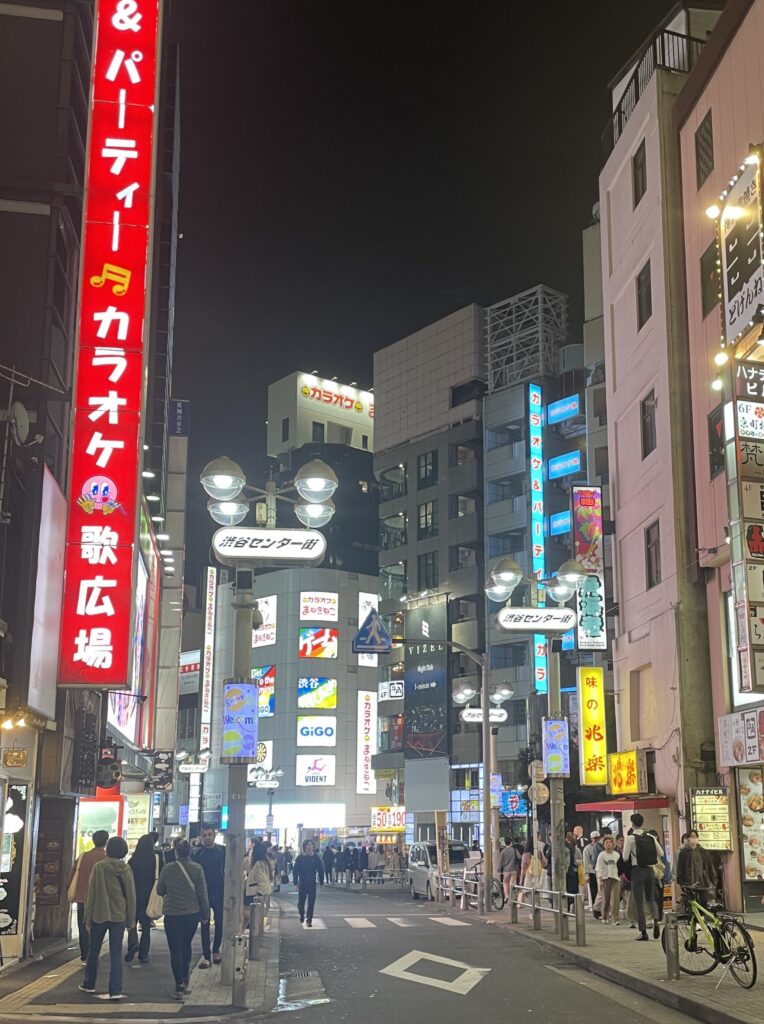
Best Time to Visit Tokyo
Tokyo experiences four distinct seasons, each offering its own unique charm, with spring being particularly notable for the stunning cherry blossoms that adorn the city’s trees.
When it comes to the best time to visit Tokyo, spring and autumn stand out as ideal seasons.
During these times, you’re less likely to encounter rain, and the temperatures are perfect for spending long days exploring the city.
Spring: March to May
Average temperatures range from 10°C (50°F) to 24°C (75°F). Spring is particularly beautiful, with cherry blossoms blooming in late March to early April, attracting many visitors to parks and festivals.
Summer: June to August
During the summer, temperatures range from 18°C (64°F) to 35°C (95°F), with high humidity and occasional heavy rains, especially in June.
Although it can be hot, summer also offers vibrant festivals and events throughout the city.
Autumn: September to November
In autumn, temperatures range from 14°C (57°F) to 27°C (81°F), providing comfortable weather and stunning fall foliage, making it a great time for sightseeing and outdoor activities.
Winter: December to February
Winter sees temperatures ranging from -1°C (30°F) to 10°C (50°F), with mild and dry conditions.
While it can get chilly, Tokyo rarely experiences heavy snowfall, making it a pleasant time to explore the city’s winter illuminations and events.
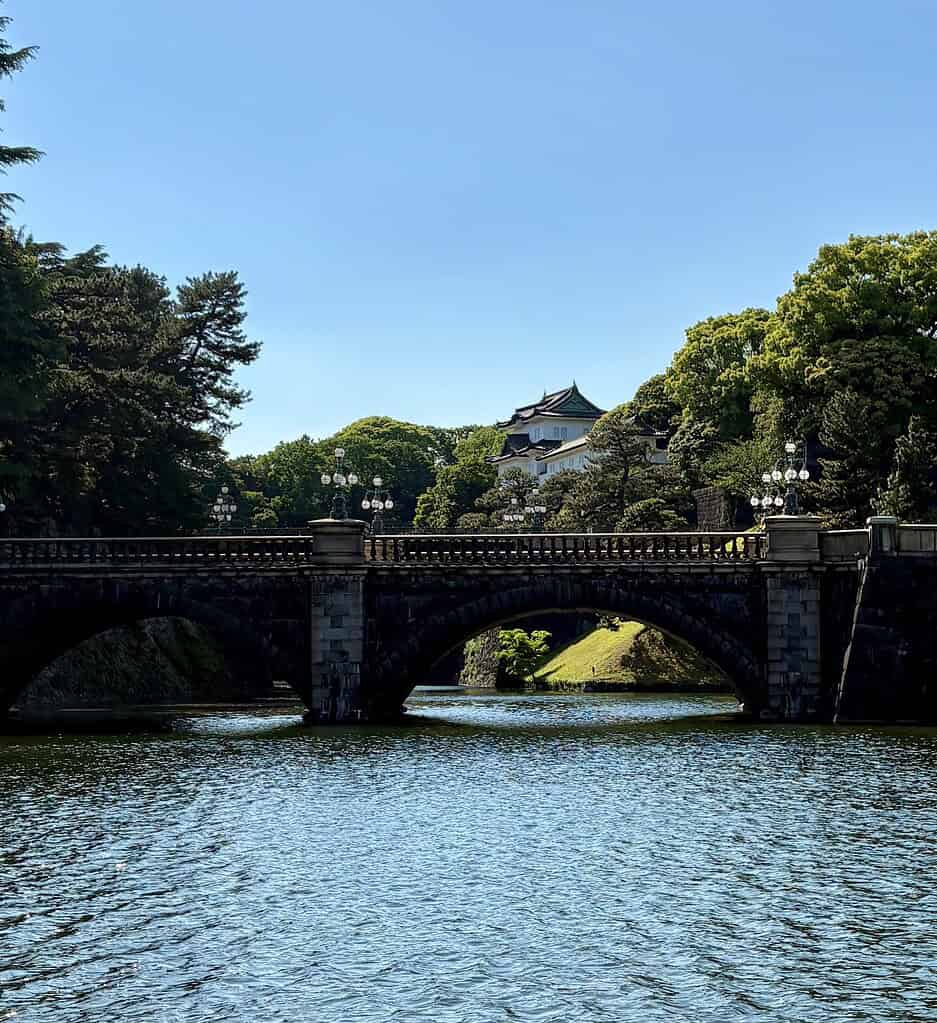
Final Thoughts on Planning Your 5 Day Tokyo Itinerary
What a city! Tokyo left me speechless, the energy, the organized crowds, the lits, the cuisine, and the city’s sheer size.
Tokyo is one of those cities you must visit full stop; there’s no debate. I still have plenty to explore, but thus far, Tokyo has taken first place city-wise for me!
If you’re visiting Tokyo for just two or three days and want to see many of the attractions mentioned in this five-day itinerary, consider the Tokyo One-Day Tour. This comprehensive tour covers a lot in just one day!
While it may feel rushed and you’ll have limited time at each stop, it allows you to experience a variety of sights and activities.
However, if you have the time to explore, I recommend following this five-day itinerary.
There’s so much to see and do in Tokyo, and it’s an amazing, unique city, so make the most of your visit. Enjoy your time in Tokyo!
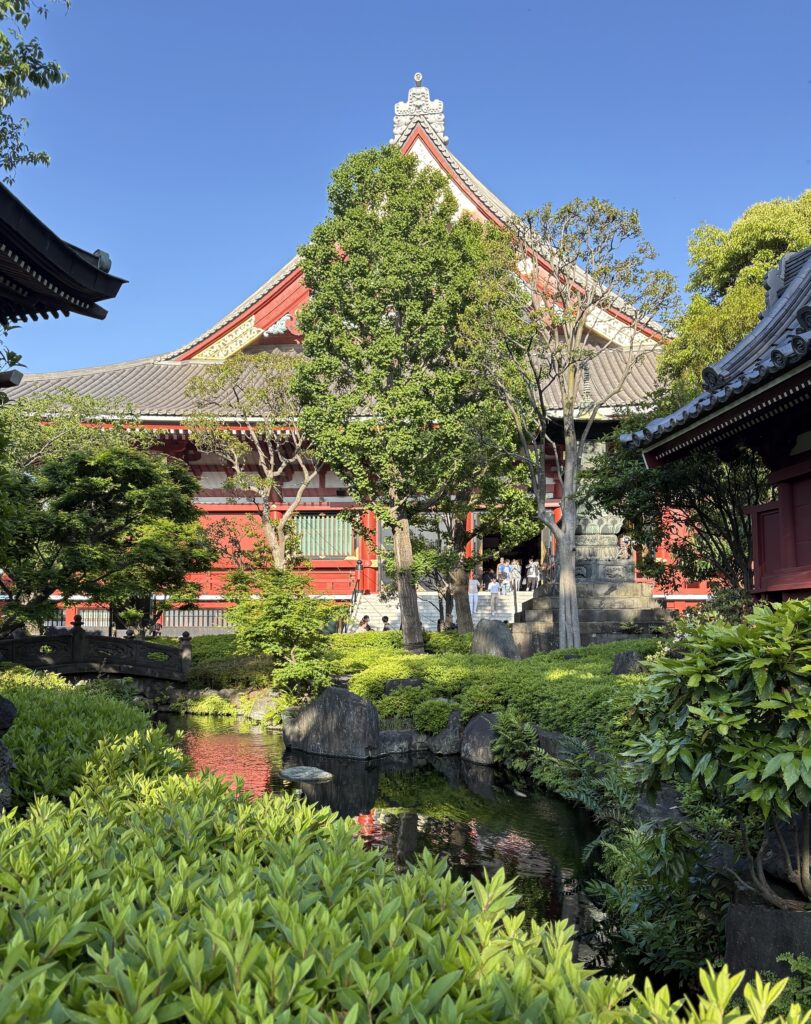
How many days are enough for Tokyo?
Five days is ideal for a first visit to Tokyo. It gives you enough time to explore major neighborhoods like Shibuya, Shinjuku, Asakusa, and Akihabara without feeling rushed, while leaving room for a short day trip or two.
What should I not miss in Tokyo in 5 days?
Must do activities in Tokyo are Shibuya Crossing, Senso-ji Temple, Meiji Shrine, Tsukiji Outer Market, and teamLab Planets. Be sure to include at least one viewpoint like Tokyo Tower or Shibuya Sky for amazing city views.
Is Tokyo expensive to visit for 5 days?
Tokyo can be pricey, but smart planning helps. Expect to spend around $100–$150 per day, including meals, transport, and a mid-range hotel. You can save by using Suica cards for transit and eating at local ramen or convenience stores.
Can I take a day trip from Tokyo during a 5-day visit?
Yes! Popular day trips include Nikko, Kamakura, and Hakone, all reachable by train. Each offers a refreshing change of scenery from Tokyo’s urban pace, perfect for one of your five days.

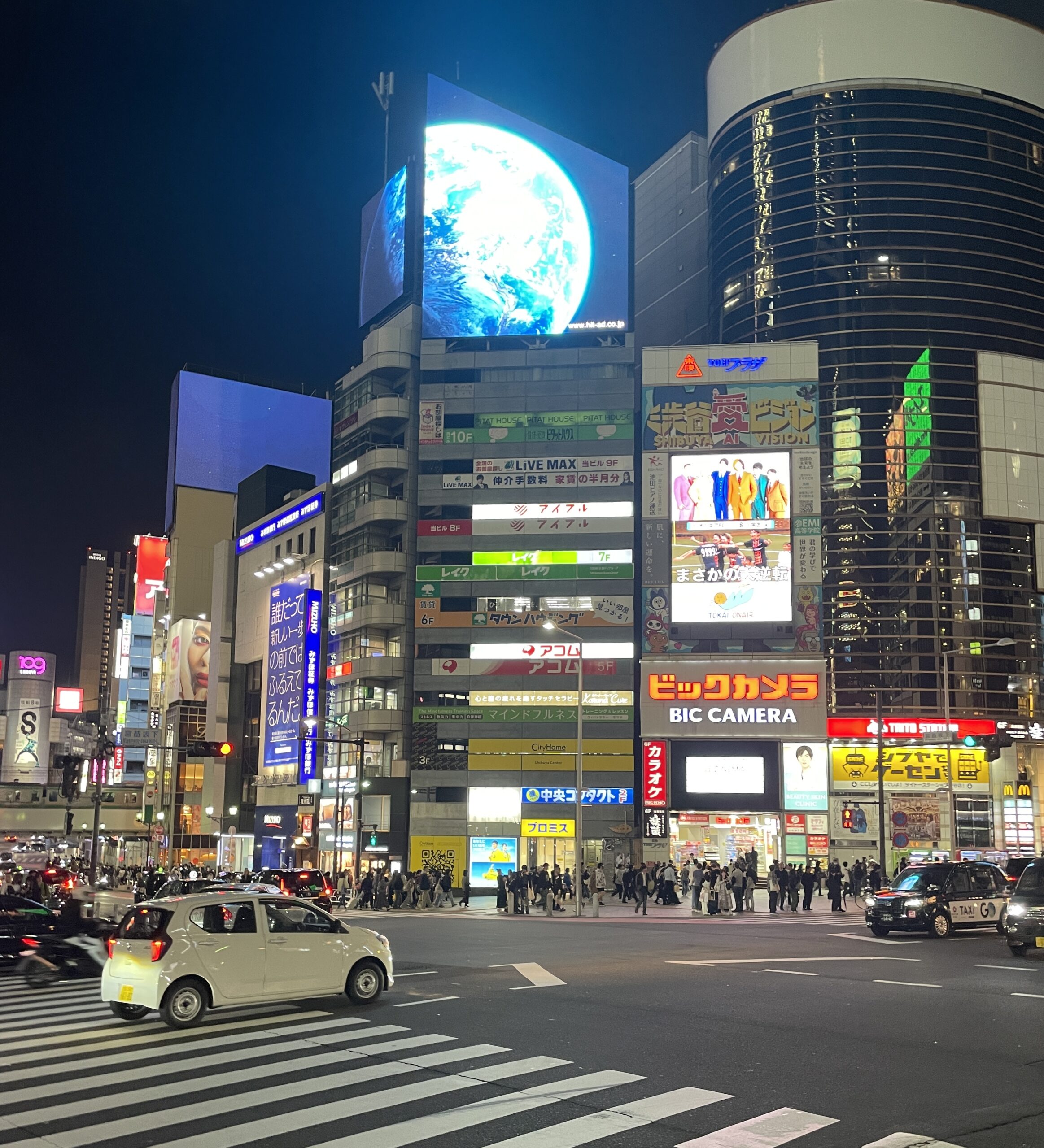
Loving the quick tips. So very useful.
I’m so glad you found this useful! I’ve started to implement this into all my city guides now. Thank you for your comment Erica!
Travelling in October. Found thid article extremely helpful.
Thank you, have a wonderful visit! 🙂